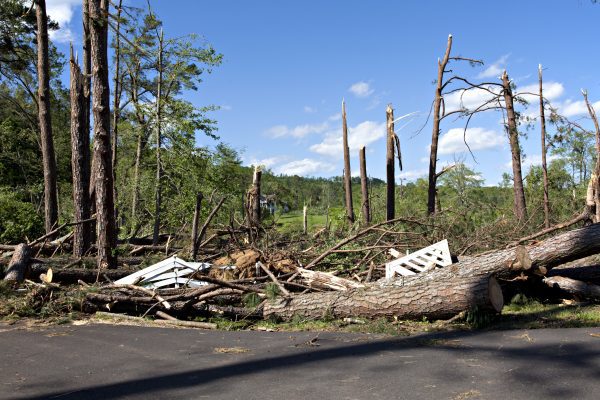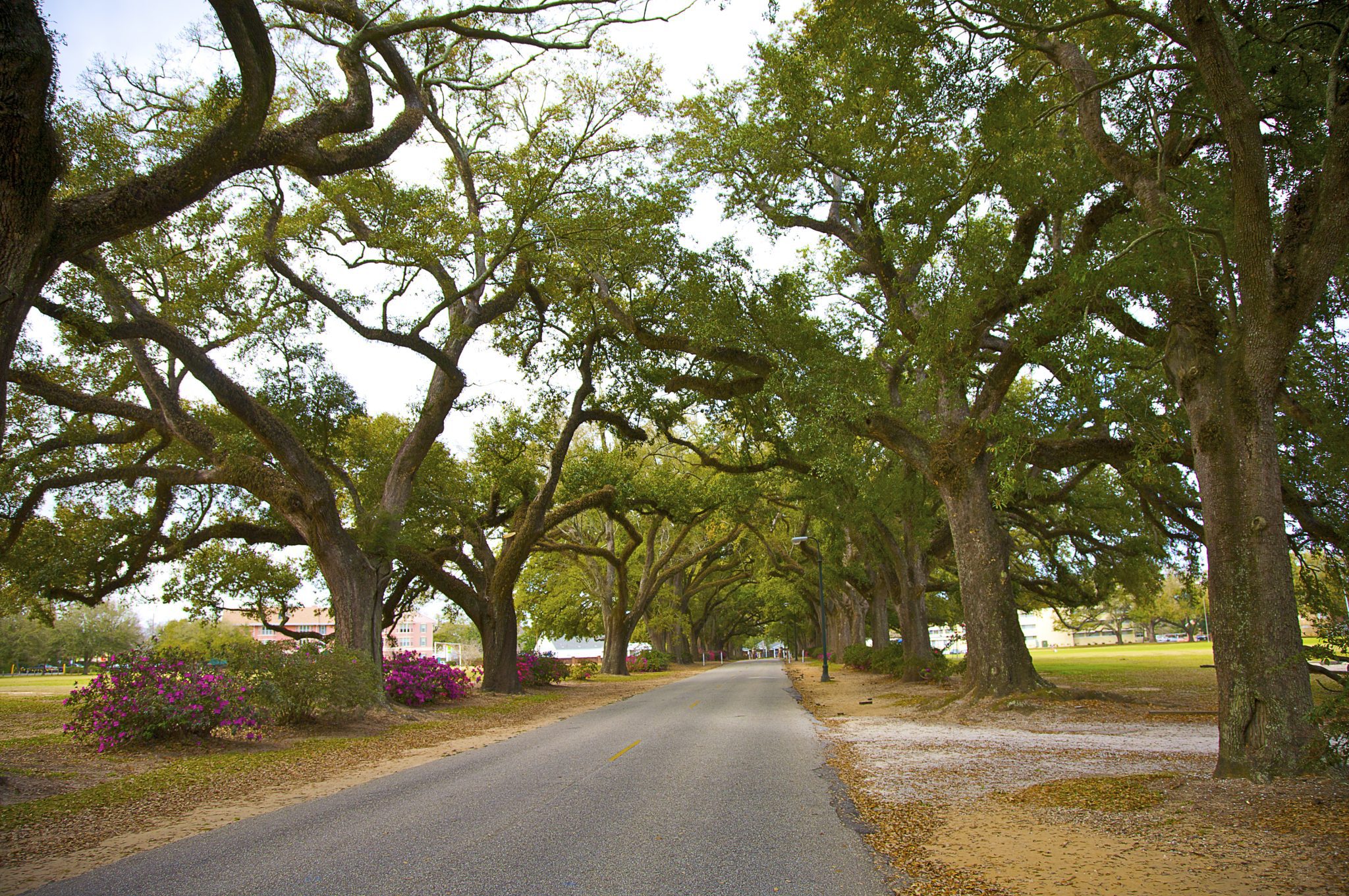Disaster

This is the first in a four-part series on Restoring Storm-Ravaged Trees Learn to assess trees for safety and how to be aware of trees and homeowner insurance conflicts.
Our Valuable Urban Forests
Trees are a part of life in the South. Without them, our cities, towns, and neighborhoods would be much less enjoyable. Trees provide many benefits to where we live, work, and play, especially for homeowners. Urban trees offer the following advantages:
- Increase property values
- Save on energy bills
- Improve soil, air, and water quality
- Help homes sell faster
- Enhance social interaction
- Make people healthier
Storms Are Way of Life in Alabama
 The prevalence of summer and fall hurricanes is another part of life in Alabama. Coastal Alabama can expect to be brushed by a hurricane every 2.5 years and receive a direct hit approximately every 9 years. It is not a matter of if but when the next storm will affect our urban forests.
The prevalence of summer and fall hurricanes is another part of life in Alabama. Coastal Alabama can expect to be brushed by a hurricane every 2.5 years and receive a direct hit approximately every 9 years. It is not a matter of if but when the next storm will affect our urban forests.
Regions of the state away from the coast experience spring and early summer tornadoes spawned by Dixie Alley, which means that there are no areas of Alabama that are free of high winds. On average, Alabama has 47 tornadoes per year. While tornadoes may occur in any month of the year, the spring season poses the greatest risk.
Why Assess Trees for Safety?
Trees are remarkable in how they are structured and work. Unable to escape from dangers and threats, they stand their ground against the many forces of nature like weather and pests. In addition, street, park, and lawn trees are under constant assault from human-related pressures such as soil compaction, construction, automobiles, and utility line clearance.
Trees are amazingly long-lived plants, often large and heavy (the trunks and branches are all wood and filled with water) and are a study in the physics of balancing forces. Substantial weights and stresses are placed on roots, trunks, and limbs made of green wood. As a result, trees can weigh thousands of pounds, and when they fall, they can cause significant damage to property and cause serious harm or even death to people.
The first and best thing to understand about trees is that there is no such thing as a perfect tree. All trees have defects or decay that can lead to failure. Just living long enough to become a big tree means that trees accumulate problems, similar to how we accumulate problems as we age. The key is minimizing the risks while striving to retain trees to maximize the values they bring to our landscapes.
For homeowners, it is vital to keep these things in mind because the most important point is that all trees will eventually fail. The best we can ever hope for is to prolong a tree’s health, safety, and useful life. This will help homeowners make reasonable and common sense decisions that will result in safer trees for people.
Beware of Trees and Homeowner Insurance Conflicts
Having homeowners insurance provides assurances that should damage occur to homes as a result of fire, hail, wind, or falling trees their investment is secure. Insurance companies have increasingly become aware that storm events generate claims as a result of trees falling on homes. This has caused some insurance companies to begin evaluating trees near homes. Some insurance companies are now asking for the removal of branches or trees within a certain distance of homes or above roofs.
These requests should be examined closely by homeowners. In some cases, they are warranted as branches may be brushing against a roof or be too close to a home. Some trees are obviously unsafe. However, there are times when a second opinion is needed. Insurance companies are not generally using credentialed arborists to evaluate these trees. Requests for removal or pruning have been made that are either unneeded or in the case of pruning away large branches, could cause irreparable damage to trees and increase risk.
Usually, insurance companies respond positively to a second opinion by a credentialed arborist. Certified arborists can provide, if needed, alternative mitigation options that would improve both the safety and health of a tree.
 Arnold “Beau” Brodbeck, Extension Specialist, Community Forestry and Arboriculture, and William Rowe, Regional Extension Agent, Forestry, Wildlife, and Natural Resources, both with Auburn University
Arnold “Beau” Brodbeck, Extension Specialist, Community Forestry and Arboriculture, and William Rowe, Regional Extension Agent, Forestry, Wildlife, and Natural Resources, both with Auburn University
New January 2022, Trees and Storms: Values, Conflicts, and Key Concepts, ANR-2795

